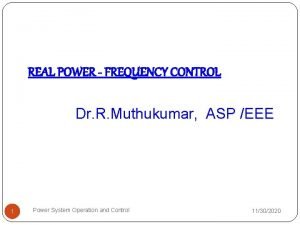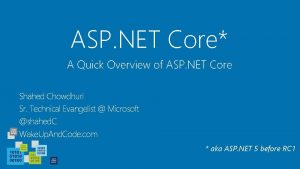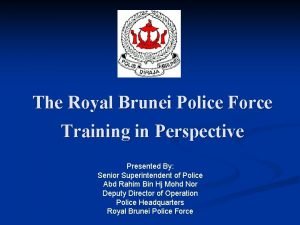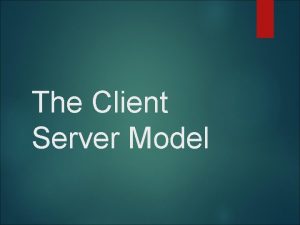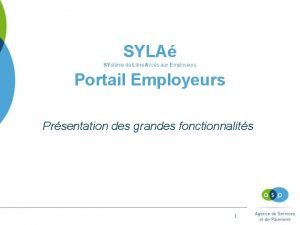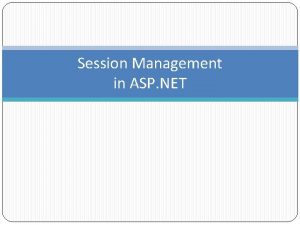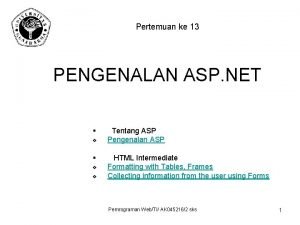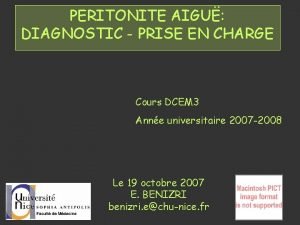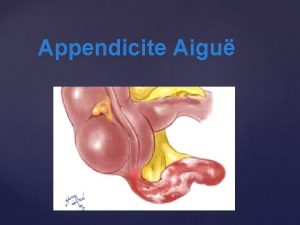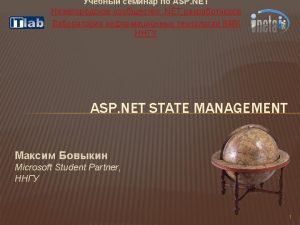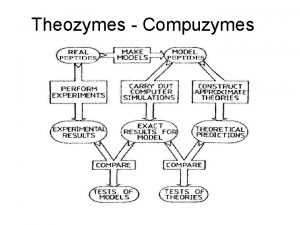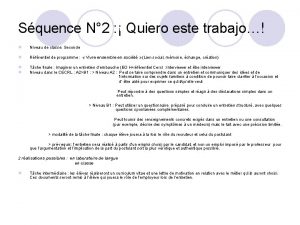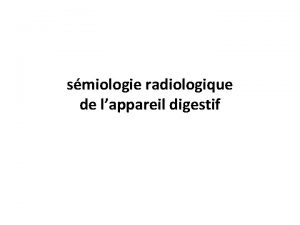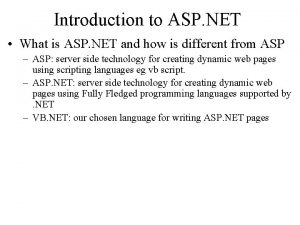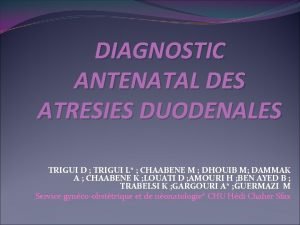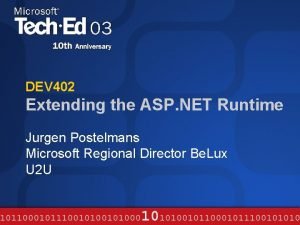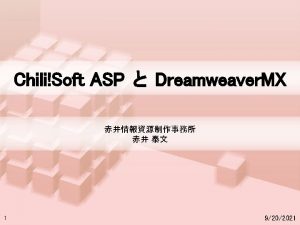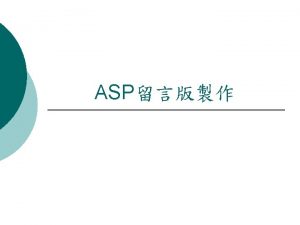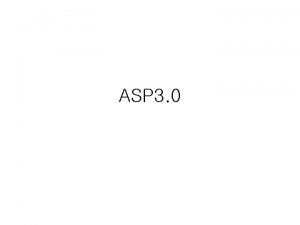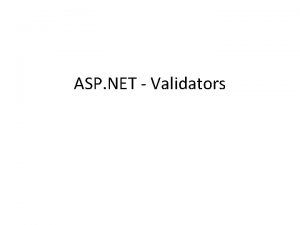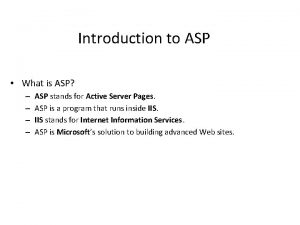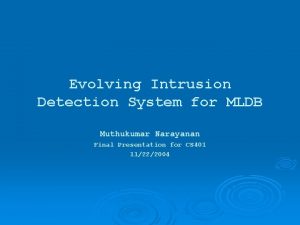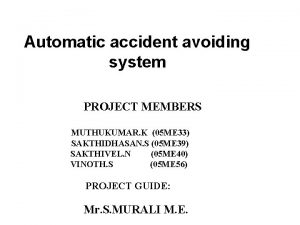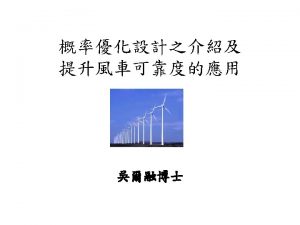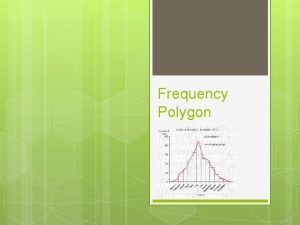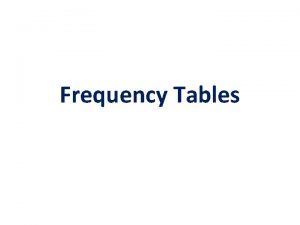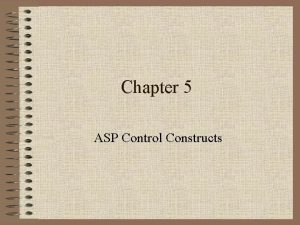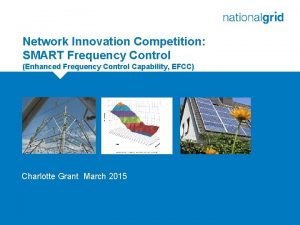REAL POWER FREQUENCY CONTROL Dr R Muthukumar ASP

































- Slides: 33

REAL POWER - FREQUENCY CONTROL Dr. R. Muthukumar, ASP /EEE 1 Power System Operation and Control 11/30/2020

Basics of speed governing mechanism and modeling - speed-load characteristics – load sharing between two synchronous machines in parallel - control area concept - LFC control of a single-area system - static and dynamic analysis of uncontrolled and controlled cases - two-area system – modeling - static analysis of uncontrolled case - tie line with frequency bias control state variable model - integration of economic dispatch control with LFC. 2 Power System Operation and Control 11/30/2020

Fundamentals of Speed Governing System Steam Lower Speed changer XC XB Raiser XA l 1 l 2 XD l 3 Pilot valve Speed Governor To Turbine XE l 4 Steam valve Main piston High pressure oil Hydraulic amplifier 3 Power System Operation and Control 11/30/2020

Fundamentals of Speed Governing System The system consists of following components Fly ball governor Hydraulic amplifier Linkage mechanism Speed changer 4 Power System Operation and Control 11/30/2020

Fundamentals of Speed Governing System • Fly ball speed governor: – This is the heart of the system which senses the change in speed(frequency). – As the speed increases the fly ball move outwards and the point B on linkage mechanism moves downwards. The reverse happens when the speed decreases. • Hydraulic amplifier: – It consists of pilot value and main piston. – Low power level pilot value movement is converted into high power level pilot value. – This is necessary in order to open or close the steam value against high pressure system. 5 Power System Operation and Control 11/30/2020

Fundamentals of Speed Governing System • Linkage mechanism: – A, B, C is a rigid link pivoted at CDE in another rigid kink pivoted at D. – This link mechanism provides a movement to control value in proportion to the change in speed. • Speed Changer: – It provides a steady state power output setting for the turbine. – Its downward movement opens the upper pilot value so that more steam is admitted to the turbine under steady state condition. – The reverse happens for upward movement of speed changer. 6 Power System Operation and Control 11/30/2020

Speed Governor modal The governor compensates for changes in the shaft speed changes in load will eventually lead to a change in shaft speed is also seen as a change in system frequency 7 Power System Operation and Control 11/30/2020

Turbine model The prime mover driving a generator unit may be a steam turbine or a hydro turbine. The models for the prime mover must take account of the steam supply and boiler control system characteristics in the case of steam turbine on the penstock for a hydro turbine The dynamic response of steam turbine in terms of changes in generator power output ΔPG to change in steam valve opening ΔXE 8 Power System Operation and Control 11/30/2020

model To develop the mathematical model of an isolated generator, which is only supplying local load and is not supplying power to another area, Suppose there is a real load change of ΔPD. Due to the action of the turbine controllers, the generator increases its output by an amount ΔPG. The net surplus power (ΔPG - ΔPD ) will be absorbed by the system in two ways. By increasing the kinetic energy in the rotor at the rate As the frequency changes, the motor load changes being sensitive to speed, the rate of change of load 9 Power System Operation and Control w. r. t frequency f 11/30/2020

Generator load or Power system model 10 Power System Operation and Control 11/30/2020

Model of Load frequency control of single area Speed Governor Turbine Power system Complete Block diagram representation of LFC 11 Power System Operation and Control 11/30/2020

Speed-Load characteristics The isochronous governors cannot be used when there are two or more units connected to the same system since each generator would have to precisely the same speed setting. For stable load sharing between two or more units operating in parallel, the governors are provided with a characteristics so that the speed drops as the load in increased. Percent speed regulation or droop: The value of R determine the steady state speed versus load characteristics of generating unit. The ratio of speed deviation(Δω) or frequency deviation (Δf) to change in valve/gate position (ΔY) or power output (ΔP) is equal to R. 12 Power System Operation and Control 11/30/2020

Speed-Load characteristics 13 Power System Operation and Control 11/30/2020

Speed-Load characteristics The parameter R is referred to as speed regulation or droop. It can be expressed in percent as 14 Power System Operation and Control 11/30/2020

Load sharing between two synchronous machine in parallel If two or more generators with drooping governor characteristics are connected to a power system, there will be a unique frequency at which they will share a load change They are initially at nominal frequency f 0, with outputs P 1 and P 2. When a load increases ΔPL causes the units to slow down, the governors increase output until they reach a new common operating frequency f’. The amount of load picked up by each unit depends on the droop characteristics: 15 Power System Operation and Control 11/30/2020

Load sharing between two synchronous machine in parallel Hence If the percentage of regulation of the units are nearly equal, the change in the outputs of each unit will be nearly in proportion to its rating Load sharing by parallel units with drooping characteristics 16 Power System Operation and Control 11/30/2020

Control Area Definition It is defined as a power system, a part of a system or combination of systems to which a common generation control scheme is applied. The electrical interconnection within each control area is very strong as compared to the ties with the neighboring areas. All the generators in a control area swing in coherently or it is characterized by a single frequency It is necessary to be considered as many control area as number of coherent group. 17 Power System Operation and Control 11/30/2020

Control Area AGC problem of a large interconnected power system has been studied by dividing a whole system into a number of control areas. In normal steady state operation, each control area of a power system should try to compensate for those demand in power. Simultaneously, each control area of a power system should help to maintain the frequency and voltage profile of the overall systems. 18 Power System Operation and Control 11/30/2020

Load Frequency Control of Single area system Speed Governor Turbine Power system Complete Block diagram representation of LFC - Uncontrolled case or Primary control loop 19 Power System Operation and Control 11/30/2020

20 Power System Operation and Control 11/30/2020

Complete Block diagram representation of LFC -Controlled case or Integral control loop 1 Speed Governor Turbine Power system Integral controller Primary LFC loop Secondary or Supplementary LFC loop controller 21 Power System Operation and Control 11/30/2020

TWO AREA SYSTEM OR MULTI AREA SYSTEM 22 Power System Operation and Control 11/30/2020

Tie-line Model 23 Power System Operation and Control 11/30/2020

TWO AREA SYSTEM 24 Power System Operation and Control 11/30/2020

Tie-line Model Consider two areas each with a generator the two areas are connected with a single transmission line the line flow appears as a load in one area and an equal but negative load in the other area the flow is dictated by the relative phase angle across the line, which is determined by the relative speeds deviations let there be a load change ΔPL 1 in area 1 to analyze the steady-state frequency deviation, the tie-flow deviation and generator outputs must be examined 25 Power System Operation and Control 11/30/2020

Tie-line Model 26 Power System Operation and Control 11/30/2020

Tie-line Model 27 Power System Operation and Control 11/30/2020

Tie-line Model 28 Power System Operation and Control 11/30/2020

TIE - LINE CONTROL 29 Power System Operation and Control 11/30/2020

TIE - LINE CONTROL 30 Power System Operation and Control 11/30/2020

TIE - LINE CONTROL 31 Power System Operation and Control 11/30/2020

SYSTEM 32 Power System Operation and Control 11/30/2020

33 Power System Operation and Control 11/30/2020
 Real power frequency control
Real power frequency control Classic asp to asp.net migration
Classic asp to asp.net migration Asp.net timeline
Asp.net timeline Asp.net custom control
Asp.net custom control Real power formula
Real power formula What is conditional relative frequency
What is conditional relative frequency Frequency vs relative frequency
Frequency vs relative frequency Form factor and crest factor
Form factor and crest factor Vmax = aw
Vmax = aw Relative frequency bar chart
Relative frequency bar chart What is a marginal frequency
What is a marginal frequency Conditional frequency table
Conditional frequency table Asp.net request validation bypass
Asp.net request validation bypass Cadet assistant superintendent of police brunei
Cadet assistant superintendent of police brunei Who is this
Who is this Sylaé connexion
Sylaé connexion Session tracking in asp.net
Session tracking in asp.net Asp.net execution model
Asp.net execution model Apa itu asp
Apa itu asp Grisaille diffuse asp definition
Grisaille diffuse asp definition Need for madness 2
Need for madness 2 Asp.net agenda
Asp.net agenda Push hard push fast fully recoil
Push hard push fast fully recoil Signe de rovsing
Signe de rovsing Inurl:bug bounty intext:token of appreciation
Inurl:bug bounty intext:token of appreciation Asp net session state
Asp net session state Asp 102
Asp 102 Quiero ser bombera comprension oral
Quiero ser bombera comprension oral Anatomie foie segmentation
Anatomie foie segmentation What is aspnet
What is aspnet Atrésie duodénale asp
Atrésie duodénale asp Dev-402
Dev-402 Asp arcobaleno cordenons
Asp arcobaleno cordenons Chilisoft asp
Chilisoft asp
